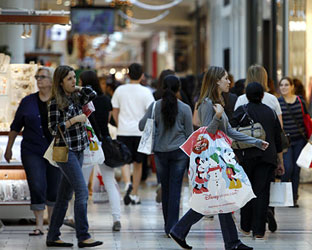LOS ANGELES — NielsenIQ has released its Mid-Year Consumer Outlook: Guide to 2025 report, which takes a closer look at macro catalysts across industries. Among the top takeaways from the study is that consumers remain determined and resilient despite uncertainty.
This, the Nielsen arm says, provides a strategic roadmap for retailers looking to win over consumers across the next 12–18 months and beyond.
According to the report, global consumers will spend $3.2 trillion more in 2025, representing nearly 6% growth compared with 2024, citing World Data Lab.
“With the global economy facing ongoing and unprecedented challenges, understanding consumer behavior has become mission-critical for businesses seeking to thrive in an ever-evolving landscape,” NielsenIQ says. “With looming uncertainty around geopolitical crises, economic stability, and environmental health, consumers are becoming resilient and are spending where it matters most. This shows a determined shift from cautious to intentional consumption, with a focus on a sense of prosperity and well-being.”
Among the global catalysts to change in 2025:
- Readiness for AI: 40% of consumers would accept a product recommendation from their AI assistant, and 40% would leverage AI to automate and speed up their everyday shopping decisions, making it essential for companies to assess which AI advancements are going to appeal to consumers and provide options to support older consumers.
- The rise and impact of GLP-1 drugs: 31% of global consumers are likely to use a medication or drug to support weight loss, but GLP-1 medications will drive a wide scope of impact by inspiring new spending sources, influencing consumer lifestyles, and shaping norms of interpersonal behavior.
- Omnichannel evolution: The social commerce revolution has led to the evolution of omni, with an 11.6% increase in global online sales performance and the rise of gamification, with 36% of consumers saying they would spend more on a purchase because of an in-app experience.
- Hot commodity costs: 60% of respondents said they will buy fewer snacks and confectionery products if prices continue to increase or remain high for the next three months—the highest ‘dropout’ response across all surveyed categories. Cocoa (+128%), Coffee (+43%), and Milk (+44%) are “hot commodities,” according to measures by Trading Economics, with rising prices impacting volume sales of related categories/products.
Top trends framing expected 2025 spending:
Consumers’ top concern remains rising food prices (33%), followed by increasing utilities costs (20%) and the threat of an economic downturn (19%). Climate change is fourth (14%), owing to the numerous extreme weather events around the world.
A majority (67%) of surveyed consumers around the globe say they are likely to change or try a new brand because of lower pricing. They intend to continue cutting back on non-essentials like Out-of-Home (OOH) Dining (38%), Out-of-Home Entertainment (37%), and Food Delivery/Takeaways (36%). Expect to see decreased spend on OOH activities, while intentional choices around In-Home Entertainment (48%) and spending on Socializing/Gatherings (46%) are likely to be maintained in 2025.
Meanwhile, private label product interest continues to rise, with 50% of consumers buying more private label products than ever. What’s more, 40% of global consumers say they would switch to a private label product they enjoy, even if it costs more.
North American consumers worry most about rising housing costs, while global conflict is a top concern for Africa, Middle East, and Europe.
The pace of monthly consumer packaged goods (CPG) inflation continues to slow across countries, down to less than 2% growth YoY. Regionally, CPG inflation is also trending down, but it remains higher than average in Latin America and Africa. Monthly global prices have risen fastest in Latin America, which has seen as much as 9% YoY growth.
“Over the past six months, there has been a determined shift from cautious to intentional consumption habits. Consumers are willing to spend more but remain conscious of potential changes,” said Lauren Fernandes, Vice President of Global Thought Leadership at NielsenIQ. “Consumers are seeking value with every purchase in multiple ways. They are spreading their spending very purposefully—and expect to leverage any excess in strategic ways in 2025 and beyond.”




